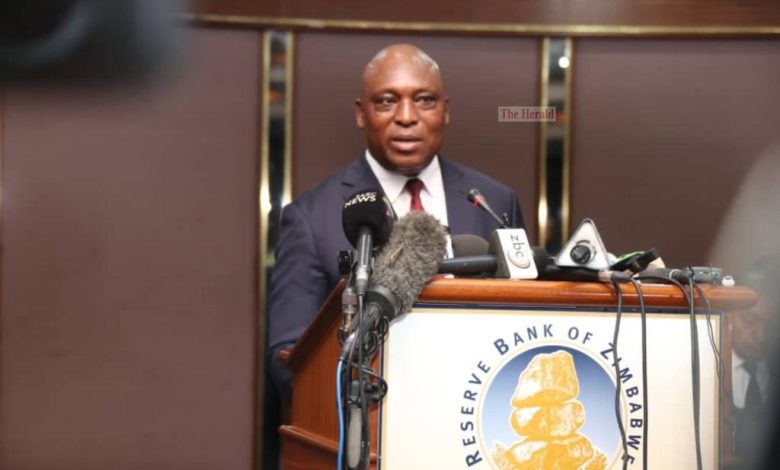Gold output jumps 86,3 percent
ZIMBABWE’S total gold output for the first five months of the year spiked by 86,3 percent to 13,171,58kg compared to 7,068,85kg in the corresponding period in 2021, official data show.
According to production figures availed by Fidelity Printers and Refiners, the country’s sole gold buyer, last month’s gold output by both small-scale and large-scale miners was up by 79,5 percent to 2,994,75kg compared to 1,668,01kg in May 2021.
Gold is one of Zimbabwe’s major foreign currency earners.
In October 2019, the Government launched the US$12 billion mining industry roadmap from which the gold sub-sector is expected to contribute US$4 billion.
This is on account of various programmes that include new investments in the gold sector, rehabilitation and expansion of old mines as well as incentive schemes the Reserve Bank of Zimbabwe (RBZ) has come up with to support the small-scale mining industry.
In recent years, small-scale miners have become the largest contributors of the yellow metal to FPR contributing at least 60 percent of the gold.
Speaking by telephone yesterday, ZMF national secretary for women affairs Ms Jescah Mazivazvose called on the need for improved capacitation of artisanal and small-scale miners saying players in the sector have the potential to produce even better but were being hamstrung by limited access to sophisticated mining equipment.
“We have the capacity to contribute even better than what we are doing at the moment.
The major limiting factors are largely to do with lack of sophisticated equipment and mining claims.
“We keep our fingers crossed that the Government will allocate more mining claims to the small-scale mining industry from the EPOs (Exclusive Prospecting Orders) that are currently available,” she said.
As part of efforts to empower prospective and productive miners in the country, the Government through the Ministry of Mines and Mining Development was implementing the use-it or lose it policy.
Under phase 1 of the programme to repossess idle mining claims, the Government targets to repossess 213 concessions but the initiative was being bogged down by some mining title holders who have approached the courts to interdict the process.
In 2021, over 80 mining claims out of the 213 identified idle mining titles were repossessed.
Through the Mines and Minerals Act, the Government is empowered to repossess unused mining titles and reissue them to investors capable of developing them productively.
Ms Mazivazvose said players in the small-scale mining industry have been able to ramp up production despite the challenges they were facing due to capacity-building workshops ZMF has been rolling out to its members across the country.
“We have been able to maintain our gold deliveries above that by large-scale producers largely because of the capacity building workshops that have been offered by ZMF on how to run and manage a mine.
“We are also appealing to the Government to continue supporting our activities by coming
up with facilities such as the loan fund where small-scale miners are able to borrow at concessionary rates to finance their operations,” she said.
“Another contributory factor as to why small-scale miners have managed to sustain output above that by our large scale counterparts is because of the 100 percent forex retention being given to the small-scale miners by Fidelity Printers upon delivering the gold,” said Ms Mazivazvose.
ZMF president Ms Henrietta Rushwaya is on record saying they were reciprocating the gesture by FPR by ramping up production of the yellow metal.
Bulawayo-based economic commentator Ms Sharon Mpofu said goo0d and sound policies within the mining sector would see the country achieving the set targets over a specific period of time.
“As long as the Government continues to enunciate investor-friendly policies, it won’t be surprising to see Zimbabwe surpassing the US$12 billion mining economy by next year.
“What is critical in the meantime is to cling onto the policies that foster investment and improved productivity.
“For example, in the small-scale mining sector, FPR is paying 100 percent forex retention for the deliveries, such a gesture encourages the players in the sector to continue delivering to the country’s exclusive gold buyer and thus partially curbing the appetite to smuggle the mineral out of the country,” she said.
“What is therefore critical for FPR to ensure that smuggling of gold is eliminated is to make sure that the miners are paid in time because in the past we have read or heard complaints about delays of up to two weeks to pay by FPR after the deliveries have been made.”
Zimbabwe had in the past been losing a lot of gold through smuggling largely to South Africa and Dubai in the United Arab Emirates but more miners are now selling their gold to FPR.
Government and players in the mining sector are upbeat that Zimbabwe will achieve the US$12 billion milestone by next year with a target for this year being set at US$8 billion.
President Mnangagwa announced at the Chamber of Mines of Zimbabwe annual conference in Victoria Falls last week that the value of mineral output in the country was at US$6 billion from US$5,2 billion in 2021.-The Herald











